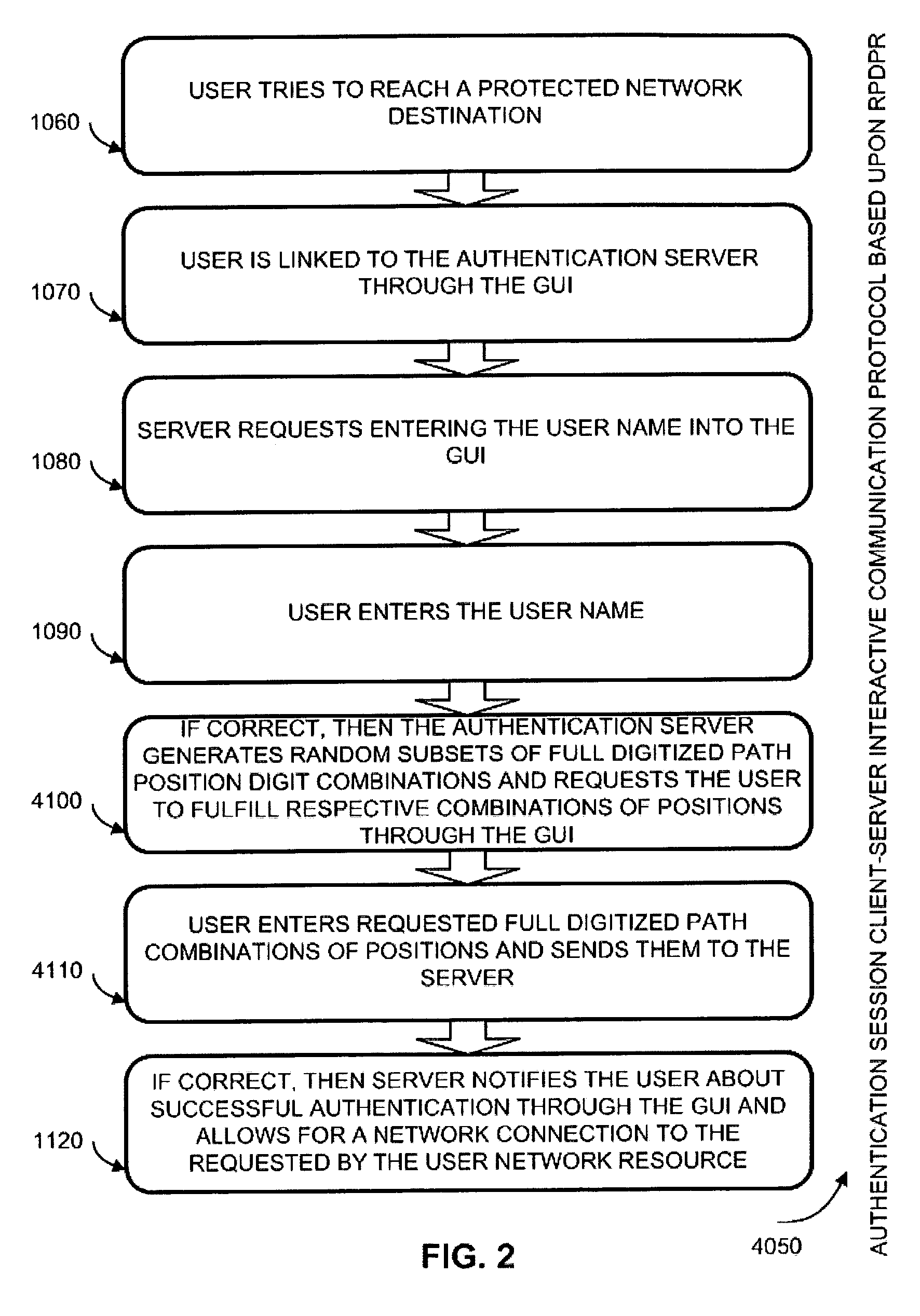Authentication system and method based upon random partial digitized path recognition
a random partial digitized path recognition and authentication system technology, applied in the field of user authentication systems, can solve the problems of limited type authentication factors, high cost and impracticality of “what user knows” types, and the combinatorial capacity of typical password passwords of password combinatorial factors, and achieve the effect of enormous combinatorial capacity
- Summary
- Abstract
- Description
- Claims
- Application Information
AI Technical Summary
Benefits of technology
Problems solved by technology
Method used
Image
Examples
Embodiment Construction
[0079]A detailed description of embodiments of the present invention is provided with reference to FIGS. 1 through 6.
[0080]FIG. 1 illustrates a basic communication set up for a representative RPDPR authentication process, according to the present invention. A client subsystem 1010 communicates by communication media, such as a local area network or wide area network communications subsystem 1020, with a server subsystem 1030. A protected network destination 1130 controls access to resources such as secure web sites identified by URLs, links to secure networks, and the like.
[0081]To set up access, a pre-authentication session 3040 is executed by the client subsystem 1010 and server subsystem 1030. In the pre-authentication session 3040, a user account is set up in the server subsystem 1030, the user name and a secret digitized path represented by an ordered data set of data fields is selected by the user and stored in the server subsystem 1030. The ordered data set characterized the ...
PUM
 Login to View More
Login to View More Abstract
Description
Claims
Application Information
 Login to View More
Login to View More - R&D
- Intellectual Property
- Life Sciences
- Materials
- Tech Scout
- Unparalleled Data Quality
- Higher Quality Content
- 60% Fewer Hallucinations
Browse by: Latest US Patents, China's latest patents, Technical Efficacy Thesaurus, Application Domain, Technology Topic, Popular Technical Reports.
© 2025 PatSnap. All rights reserved.Legal|Privacy policy|Modern Slavery Act Transparency Statement|Sitemap|About US| Contact US: help@patsnap.com



